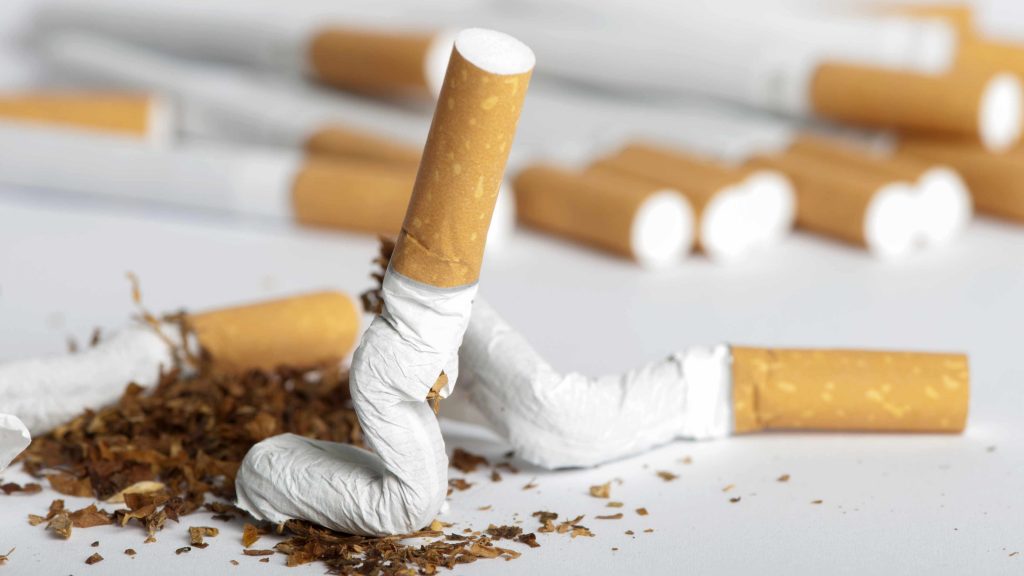-
Health & Wellness
Mayo Clinic’s unique tobacco program brings hope for long-term addiction

Thomas Bennett had tried to quit chewing tobacco 75 to 100 times before he came to Mayo Clinic. Even a precancerous lesion in his mouth hadn’t stopped him. Before every doctor’s appointment, “I’d throw my can of chew out, she would say I don’t have cancer, and then I would go get a can of chew again,” Thomas recalls. “That’s how strong my addiction was.”

It was in April 2021 that Thomas joined Mayo Clinic’s Intensive Tobacco Treatment Program, a five-day inpatient option in Rochester, Minnesota. Two-thirds of participants successfully quit — even though only 7.5% of American smokers manage to do so each year.
“This is the most intensive therapy you can get,” says Dr. Jon Ebbert medical director of the Mayo Clinic Nicotine Dependence Center. “Most of the time participants say, ‘This is my last hope,’” having tried every other treatment option. But Dr. Ebbert insists, “It’s not your last hope. Even if you relapse, you’ll be able to quit again because you’ll have all the skills — and all the pills — to be successful.” The methods are effective for cigarettes, smokeless tobacco or vaping (if adopted to replace other tobacco products).
Even when he arrived at Mayo Clinic, Thomas had his can of chew. Before check-in, “I was secretly chewing tobacco in a tobacco-free environment,” he laughs. Yet Thomas also was determined to invest in his health. “I just wanted to be locked away,” he says. “But Mayo’s approach is so different from anywhere else.”
The Intensive Tobacco Treatment Program was inspired in 1992 by a Mayo Clinic pilot study. For two weeks, researchers provided 24 smokers with inpatient care — group counseling, stress management, nicotine-replacement therapy. A year later, many remained tobacco-free. This inspired the Mayo Clinic team to launch a similar program, and it has proven remarkably effective. One study showed a success rate nearly double that of an outpatient option, even though the residential patients were heavier smokers.
For five days, participants immerse themselves in recovery. Each person receives a custom treatment plan, with medications and nicotine-replacement therapies targeted to their needs. “I don’t think there was one of us on the exact same program,” says Brian Fulford, a 2021 participant who successfully quit smoking after 30 years. “It was very tailored.”

For five days, participants immerse themselves in recovery. Each person receives a custom treatment plan, with medications and nicotine-replacement therapies targeted to their needs. “I don’t think there was one of us on the exact same program,” says Brian Fulford, a 2021 participant who successfully quit smoking after 30 years. “It was very tailored.”
A physician visits each participant daily, adjusting dosages to manage withdrawal or cravings. The program also provides one-on-one counseling, group support and medical lectures. Topics include relapse prevention, mindfulness and the physiology of addiction. “You’ve got to get away from your life, manage depression and anxiety, learn about mindfulness, understand the pills. We bring all of that together,” says Dr. Ebbert.
Teresa, a Mayo Clinic nurse who smoked for nearly four decades, still relies on many of the strategies she learned during her five days. “Cigarettes were my best friend,” she says. “My new best friend is now crocheting.” Teresa picked up the hobby while in treatment, partly to occupy her hands. She also keeps nicotine gum and lozenges close by — strategically stashing them in her purse, car and around her house. It’s been a year since she’s had a cigarette.
Four individual follow-up sessions and ongoing medication management are included in the cost of the program. “It’s an intense five days where you’re extracting yourself from your daily routine, but it’s a long-term program,” says Dr. Ebbert.
Virtual group follow-ups are also available, though many participants choose to stay connected on their own. For Brian, this camaraderie proved critical to his success. “I picture the faces of everyone — my co-patients and my counselors — and that provides me with an incredible amount of strength (not to smoke),” he says. His group still meets on Zoom every month.
At the end of the program, participants are invited to write a goodbye letter to tobacco. “It was emotional,” recalls Thomas. “Tobacco had been such a part of my life.” But, nearly two years later, he hasn’t gone back to it. “This program 100% transformed the trajectory of my life.”
Sessions are scheduled regularly. Click here to enroll.







